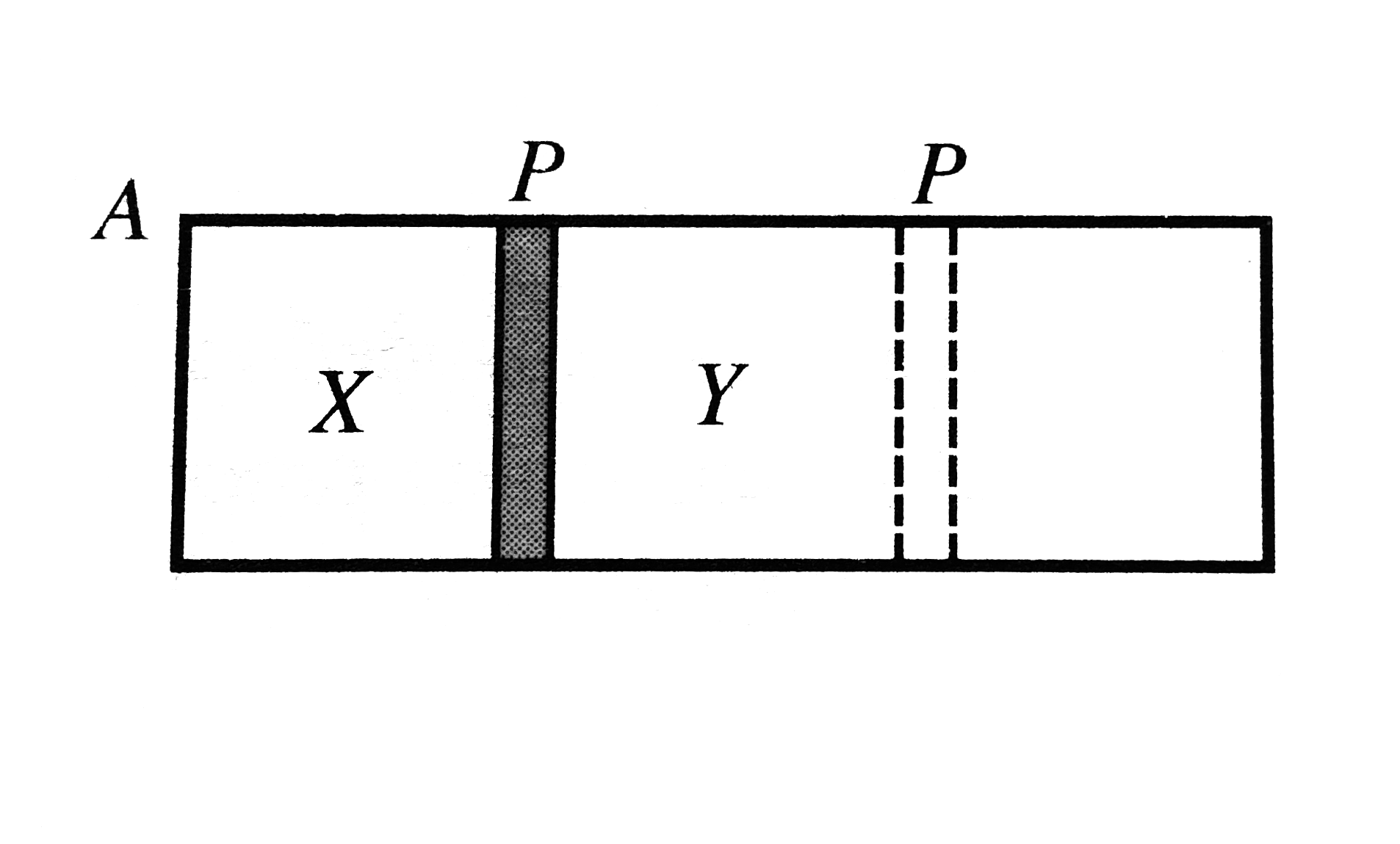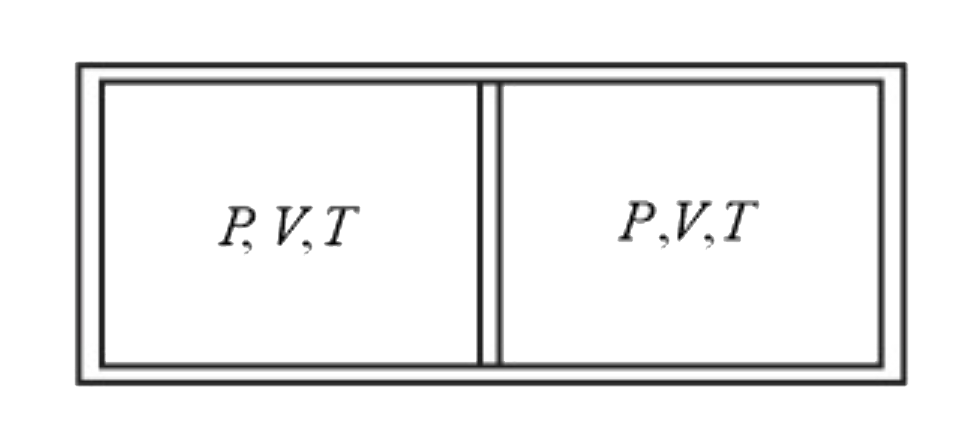A cylindrical chamber A of uniform cross section is divided into two parts X and Y by a movalbe piston P which can slide without friction inside the chamber. Initially part X contains 1mol of a monochromatic gas and Y contains 2mol of a diatomic gas, and the volumes of X and Y are in the ratio 1:2 with both parts X and Y being at the same temperature T. Assuming the gases to be ideal, the work W that will be done in moving the piston slowly to the position where the ratio of the volumes of X and Y is 2:1 will be

−5.8T
8.3T
12.3T
zero
The correct Answer is:A
a. Since the piston is moved slowly we assume isothermal condition for both the gases as thermal equilibrium is maintained throughout.
Let the total of chamber be. V. Then volume of gas in X increase (expand) from V/3 to 2V/3. The work done is positve and given (for 1 mol of monatomic gas by
Wx=+RTloge.2V/3V/3=RTloge2
The volume of gas in Y decrease (compressed) from 2V/3 to V/3.
The work done (isothermally) is negative and given (for 2 mol of diatomic gas) by
Wx=2RTloge(V/3)2V/3=−RTloge2
Hence the total work done on the system is
W=Wx+WY=−RTloge2
Substituting R=8.3,log22=0.6996 and simplifiying W=−5.8T.
Topper's Solved these Questions
- KINETIC THEORY OF GASES AND FIRST LAW OF THERMODYNAMICSBook:CENGAGE PHYSICS ENGLISHChapter:KINETIC THEORY OF GASES AND FIRST LAW OF THERMODYNAMICSExercise:Multiple Corrects
Explore 29 Videos
- KINETIC THEORY OF GASES AND FIRST LAW OF THERMODYNAMICSBook:CENGAGE PHYSICS ENGLISHChapter:KINETIC THEORY OF GASES AND FIRST LAW OF THERMODYNAMICSExercise:Assertion-Reasoning
Explore 6 Videos
- KINETIC THEORY OF GASES AND FIRST LAW OF THERMODYNAMICSBook:CENGAGE PHYSICS ENGLISHChapter:KINETIC THEORY OF GASES AND FIRST LAW OF THERMODYNAMICSExercise:Subjective
Explore 22 Videos
- KINETIC THEORY OF GASESBook:CENGAGE PHYSICS ENGLISHChapter:KINETIC THEORY OF GASESExercise:Compression
Explore 2 Videos
- LINEAR AND ANGULAR SIMPLE HARMONIC MOTIONBook:CENGAGE PHYSICS ENGLISHChapter:LINEAR AND ANGULAR SIMPLE HARMONIC MOTIONExercise:Single correct anwer type
Explore 14 Videos
Similar Questions
A compound contains elements X and Y in 1 : 4 mass ratio. If the atomic masses of X and Y are in ratio 1 : 2, then empirical formula will be
View SolutionAt STP the density of a gas X is three times that of gas Y while molecule mass of gas Y is twice that of X. The ratio of pressures of X and Y will be:
View SolutionAt STP the density of a gas X is three times that of gas Y while molecule mass of gas Y is twice that of X. The ratio of pressures of X and Y will be:
View SolutionA cylindrical vessel made of thermally insulating material is divided into two equal parts by an insulating and. Movable piston. Both parts contain ideal monoatomic gas . The gas in the left part is supplied heat such that the volume of right part becomes one-eight of its initial volume . Work done by the gas in the right part is

View SolutionThe area between x=y2and x=4is divided into two equal parts by the linex=a, find the value of a.
View SolutionUnder the identical conditions of temperature, the density of a gas X is two times to that of gas Y while molecular mass of gas Y is three times that of X. Calculate the ratio of pressure of X and Y.
View SolutionIn two containers X and Y same gas is filled. If the pressure, volume and absolute temperature of gas in X are three times as compared to that in Y and if the mass of X is mg, the mass of Y is
View SolutionThe area enclosed by the circle x2+(y+2)2=16 is divided into two parts by the x-axis. Find by integration, the area of the smaller part.
View SolutionA vertical cylinder closed at both ends is fitted with a smooth piston dividing the volume into two parts each containing one mole of air. At the equilibrium temperature of 320 K, the volume of upper and lower parts are in the ratio 4:1. The ratio of volume will become 3:1 at a temperature of
View SolutionA current is passed through two cells connected in series. The first cell contains X(NO3)3 (aq) and the second cell contains Y(NO3)2 (aq). The relative atomic masses of X and Y are in the ratio 1:2. What is the ratio of liberated mass of X to that of Y?
View Solution